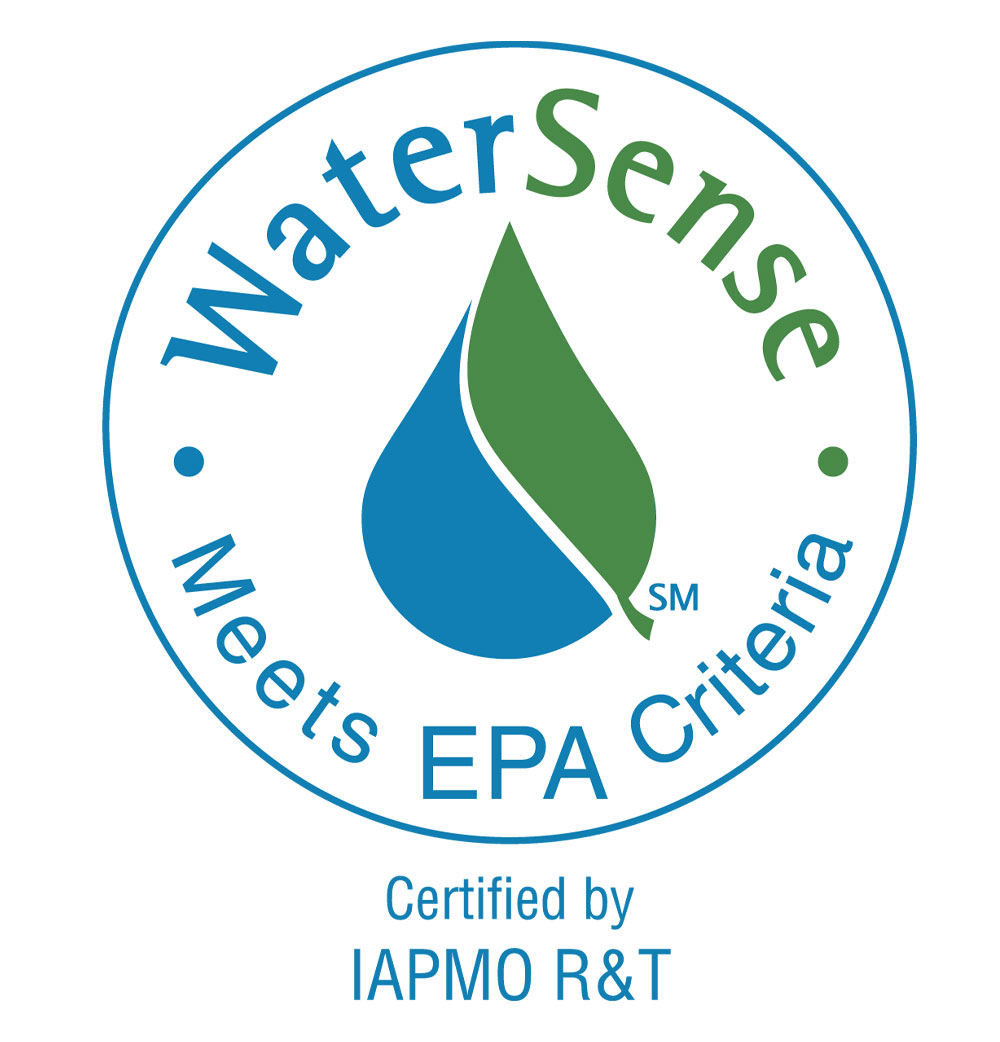Showers are estimated to consume more than 1.7 trillion gallons of water per year in the United States — enough for 41 million baths, which use twice as much water. This represents the third largest indoor consumption of water by the average American household, which uses 40 gallons of water for showers each day.
By installing WaterSense-certified showerheads that deliver a flow rate of no more than 2.0 gallons of water per minute (gpm) in place of the standard requirement of 2.5 gpm, households could conserve approximately 2,700 gallons of water per year. If every U.S. household made the switch, total savings would be 260 billion gallons annually or approximately the same amount that passes over Niagara Falls in four days.
WaterSense showerheads also reduce the amount of energy required for heating water, which is the second largest source of energy use in the home. So, in addition to conserving water, residential users could reduce their energy requirements by 330 kilowatt hours of energy per year — enough to power their entire house for 11 days.
What About Performance?
Early versions of water-saving showerheads failed to acknowledge that performance was subjective based on the user experience, regardless of the mechanical specifications for a particular product.
In developing criteria for WaterSense shower- head certification, consumers were directly involved in testing performance, taking into account their satisfaction with such things as spray intensity, the amount of coverage provided, and whether shampoo could be rinsed out of their hair in the same amount of time as with a standard showerhead, for example.
By basing performance on such real-life considerations, showerheads bearing the
WaterSense label have been determined to provide both significant water savings and greater user satisfaction.
Certification Criteria
WaterSense evaluates showerhead performance through three key performance metrics:
•Spray force equals or exceeds 2.0 ounces-force (ozf) [0.56 Newtons (N)] for showers with perpendicular spray or 1.4 ounces-force (ozf) [0.40 N)] for rain showers. The new test protocol and performance criteria for rain showers are mathematically equivalent to the protocol and criteria currently used to test standard fixed showerheads; this update simply serves to equalize requirements for the two types of showerheads and reflect their typical mounting configurations.
• To satisfy the spray coverage criteria, the total combined maximum volume of water collected in the 2- and 4-inch annular rings must not exceed 75 percent of the total volume of water collected. This ensures that the showerhead spray coverage is not too narrow. Additionally, the total combined minimum volume of water collected in the 2-, 4-, and 6-inch annual rings must not be less than 25 percent of the total volume collected, indicating that the showerhead does not provide spray coverage with a hollow center. The spray coverage criteria are intended to ensure that water flow is distributed in a way consistent with user preference. The criteria contained in the specification were crafted to identify and disqualify showerheads with sprays that are too wide or too narrow.
• Minimum flow requirements ensure that WaterSense labeled showerheads will satisfy consumer performance expectations by meeting or exceeding minimum flow rates, even in households with low water pressure. This shower-head feature is known as pressure compensation. To earn the WaterSense label, a showerhead’s minimum flow rate is required to be greater than 60 percent of the maximum flow rate when tested at a flowing pressure of 20 ± 1 psi, and greater than 75 percent of the maximum flow rate when tested at flowing pressures of 45 and 80 ± 1 psi. WaterSense requires testing at 45 psi so consumers can match showerheads with compatible automatic-compensating mixing valves, which are rated at 45 psi. The 20 ± 1 and 80 ± 1 psi requirements are intended to evaluate flow rate under minimum and maximum flowing pressures.
All statistics from U.S. EPA WaterSense website

Hugo Aguilar, P.E.
Last modified: May 8, 2024

